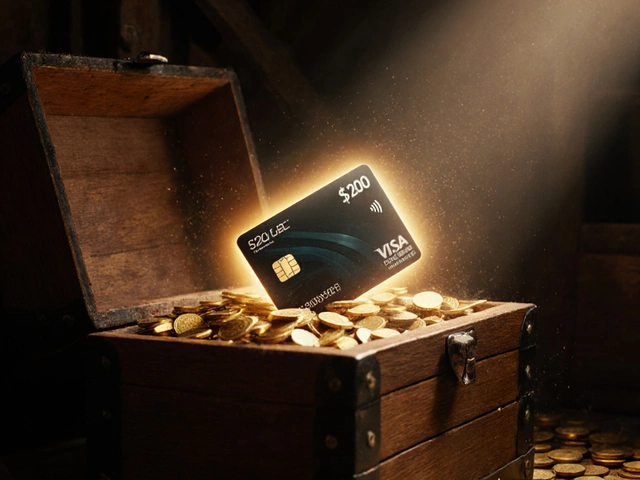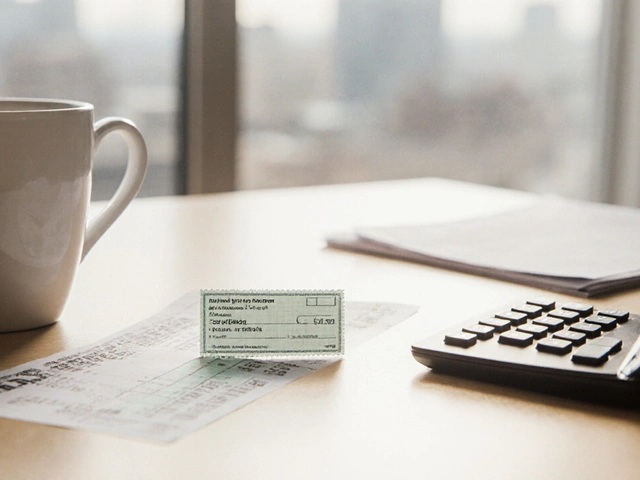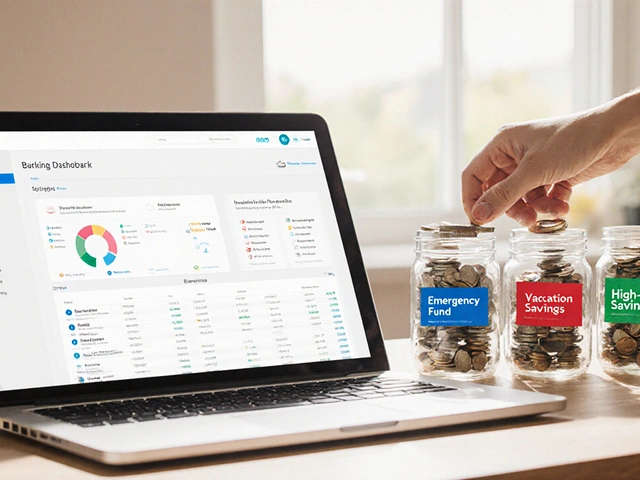
Seven credit cards. That stack of plastic might look like a busy wallet or a financial disaster waiting to happen. Ever found yourself signing up for another credit card just for the points, only to forget when it’s due? Or maybe you’ve met someone who claims they juggle over half a dozen cards without breaking a sweat. The truth is, there’s no magic number that fits everyone. Some folks thrive with one card, others handle twice as many—so where does seven land on the spectrum? The answer is tangled up in personal habits, credit history, and a few financial rules you probably haven’t heard from your bank.
Why People End Up With Seven (or More) Credit Cards
It’s easier than you think to reach seven cards. A welcome bonus here, a balance transfer there—maybe you wanted cash back for groceries or points for travel, and before you know it, your stack’s grown. Banks make it tempting, dangling flashy offers with zero annual fees for the first year or rates that seem too good to pass up. Some folks chase the perks: one card for groceries, one for gas, one for Amazon, another for travel, maybe a couple of no-annual-fee cards from way back. Others keep store cards for special discounts, sometimes not even remembering signing up until they find the dusty card in a drawer.
It’s not just about chasing perks. Some keep old cards because closing a long-standing account can hurt their credit history. For those with mortgages on the horizon, that history counts. Plus, everyone from your insurance company to your future employer might peek at your credit activity. On top of that, banks sometimes reduce credit limits if your cards sit unused. Add an emergency card or two to the mix—just in case—and you’re at seven before realizing it.
Young professionals are a growing group driving up the average. According to Experian’s latest reporting from the end of 2024, the average American holds 3.89 credit cards. But the median is much lower—meaning a smaller group is pulling the average up with much larger stacks. So, seven isn’t as wild as it sounds, but it’s still double the typical count.
In some circles—like credit card “hacker” forums or points-obsessed travel communities—seven is small potatoes. The extremes? Some super-users manage 20 cards or more, carefully tracking usage and payments in spreadsheets, chasing elite rewards. Still, for regular folks, that many cards feels like spinning plates in a windstorm.
The Real Risks and Unexpected Perks of Having Seven Credit Cards
Let’s start with the headaches. Seven cards means seven payments to keep up with, seven due dates, and seven ways to slip up. Miss a payment, even by accident, and your credit score can take a painful hit. According to FICO, payment history makes up 35% of your score—the biggest chunk. Worse, a late payment can stick to your record for up to seven years.
There’s the danger of using your available credit as available cash. Seven cards can mean tens of thousands in potential borrowing power. The risk? It’s too easy to overspend without even noticing, carrying balances that rack up interest quickly. According to the Federal Reserve’s 2024 data, the average interest rate for credit cards hit 21.2%. Even a small balance can snowball if you’re not paying it off fast.
But there are perks, too, especially for those who don’t carry balances and are organized. Multiple cards can give you higher total credit limits. That means your credit utilization ratio (the chunk of credit you’re using compared to what you have) drops, which healthy credit scores love. For example, if you have $14,000 of limit spread over seven cards and carry a $1,400 balance, that’s only 10% utilization—well under the recommended 30% max.
Let’s make that clear:
| Cards | Total Limit | Balance | Utilization % |
|---|---|---|---|
| 2 | $4,000 | $1,400 | 35% |
| 7 | $14,000 | $1,400 | 10% |
See the benefit? More cards, higher limit, lower utilization. But that only helps if you aren’t tempted to max out $2,000 at a time on each card. Where things often go sideways is when people treat those cards like Monopoly money. Even with all cards paid on time, if you apply for several at once, you’ll trigger hard inquiries, which can ding your score for up to a year or so—but not as much as missing payments or maxing out cards.
Then there’s the annual fee factor. Adding up fees from premium cards can eat away any rewards you earn. Are you getting $95 in value from that $95 fee? Many people aren’t, especially if perks are forgotten or hard to redeem. The travel points you dreamed of can expire, or maybe you simply don’t fly enough for lounge access to pay off.

How to Make Seven Credit Cards Work for You
It all comes down to staying on top of things. If you’re juggling seven cards, this isn’t the time to rely on memory alone. The best way to stay organized is to automate. Set up alerts for due dates and payments—most banks send free text or email reminders. Scheduling payments (at least the minimums) removes the risk of accidentally missing one when life gets busy. Regularly check each account online or with the app so nothing slips by, like annual fees or surprise charges.
Draw up a master list of all your cards—write down which ones have annual fees, what the statement closing dates are, and which ones offer bonus rewards for certain categories. It sounds dorky but it totally works. Apps like Mint, YNAB, or even a simple spreadsheet can help you track spending across all accounts. Knowing which card to use for each purchase helps you earn the most rewards and prevent card inactivity.
Keep old cards open whenever possible—unless there’s a steep annual fee you can’t justify. Closing an old card shortens your credit history and can increase your credit utilization. But having a drawer full of unused cards can make you a target for fraud. Set up a small, recurring charge (like a streaming service) on inactive cards and pay it each month to keep them alive and error-free. Many folks forget that dormant cards can be canceled by the bank; a $3 monthly charge can keep years of credit history healthy.
Watch for annual fee changes. Some cards hike fees after the introductory year or quietly alter benefits, leaving you paying for perks you don’t use. If you’re not getting value, call customer service and ask for a retention offer—sometimes you’ll get an annual fee waived or a points bonus for sticking around. If not, consider downgrading to a no-fee version rather than canceling outright.
Should You Keep, Close, or Consolidate Your Credit Cards?
There’s no one-size-fits-all answer here. Seven cards might be perfect if you’re disciplined, pay off balances in full, and actually make use of the rewards. But for many, that’s more work than benefit. If you feel anxious about keeping track or find you’re carrying balances, it might be time to prune the stack.
When closing a card, do it carefully. Always pay off the full balance first. If it’s an old account or your only card with a long credit history, think twice. Closing it might tank your average account age and increase your credit utilization overnight. NerdWallet noted recently that people who close one card out of seven see only a minor dip in score, but if that card is their oldest, the drop is much bigger.
If juggling seven is too much, consolidating balances onto a low-interest card or using a balance transfer offer can save on interest. But beware: don’t rack up new balances on the now-empty cards. That’s where most people dig a deeper hole, chasing short-term relief and ending up with more debt.
Another trick: call your card issuer and see if you can transfer a high-interest balance to a lower or no-fee card you already hold. Sometimes you can get a reduced-rate offer by just asking, without a lengthy application.
Finally, keep an eye on total available credit, account age, and utilization—these three factors weigh heavily on your score. Don’t let a desire for simplicity push you into losing years of solid credit history or dipping below a healthy utilization rate. If you’re going to close anything, target cards with high fees, poor service, or those offering perks you genuinely never use anymore.
The bottom line? Seven isn’t too many if your system works for you, your fees add up to less than your rewards, and you never pay a cent in interest. For anyone prone to missed payments or impulse spending, keep it lean and mean. Seven cards can either be a sign of financial savvy—or a warning light that you’re one due date away from trouble. It all depends on if you’re holding the cards… or if they’re holding you.






Write a comment